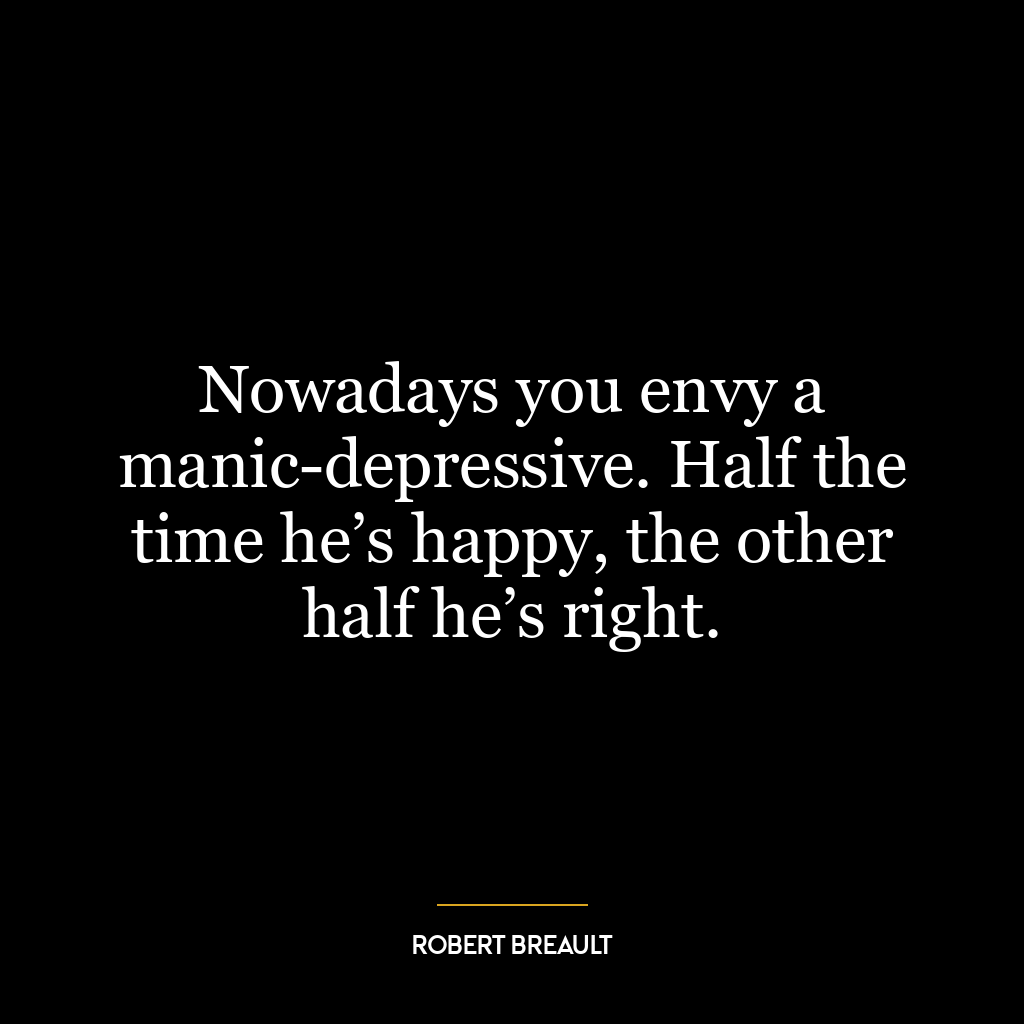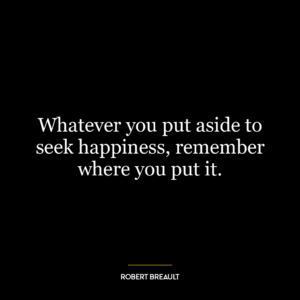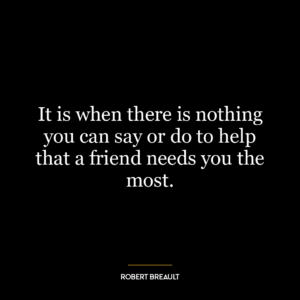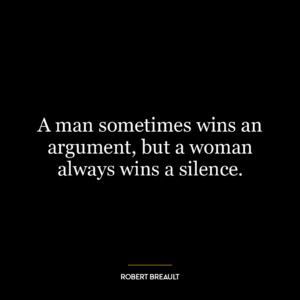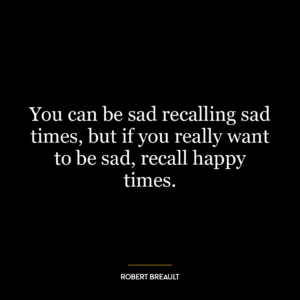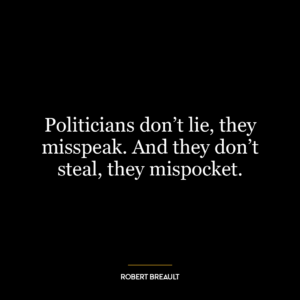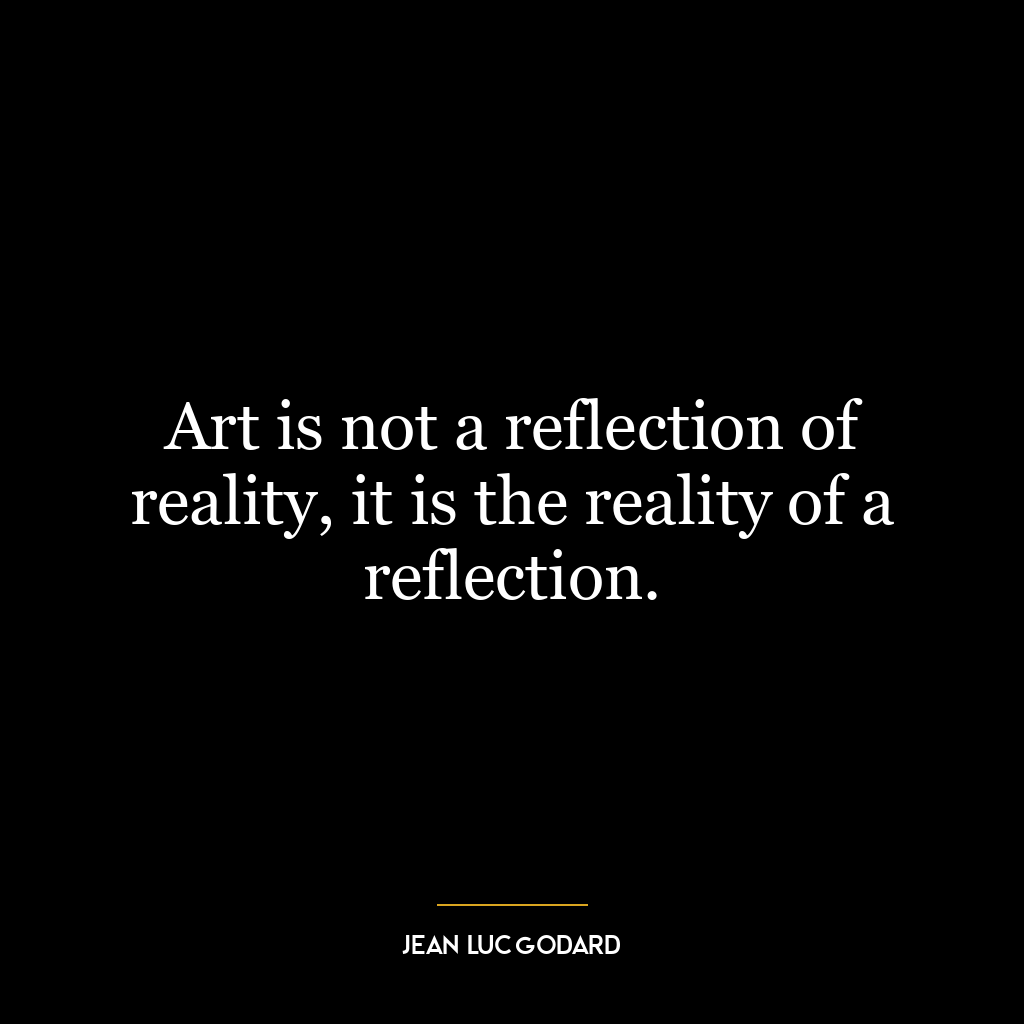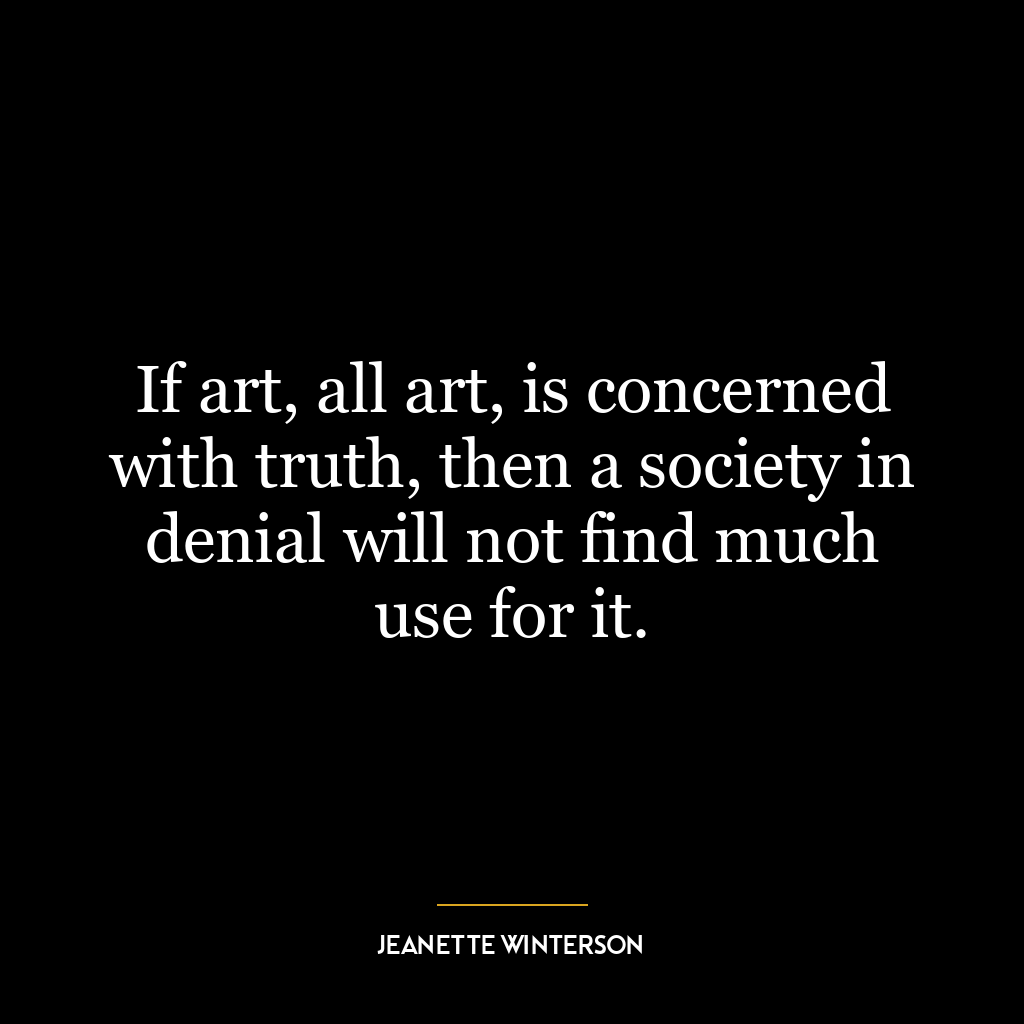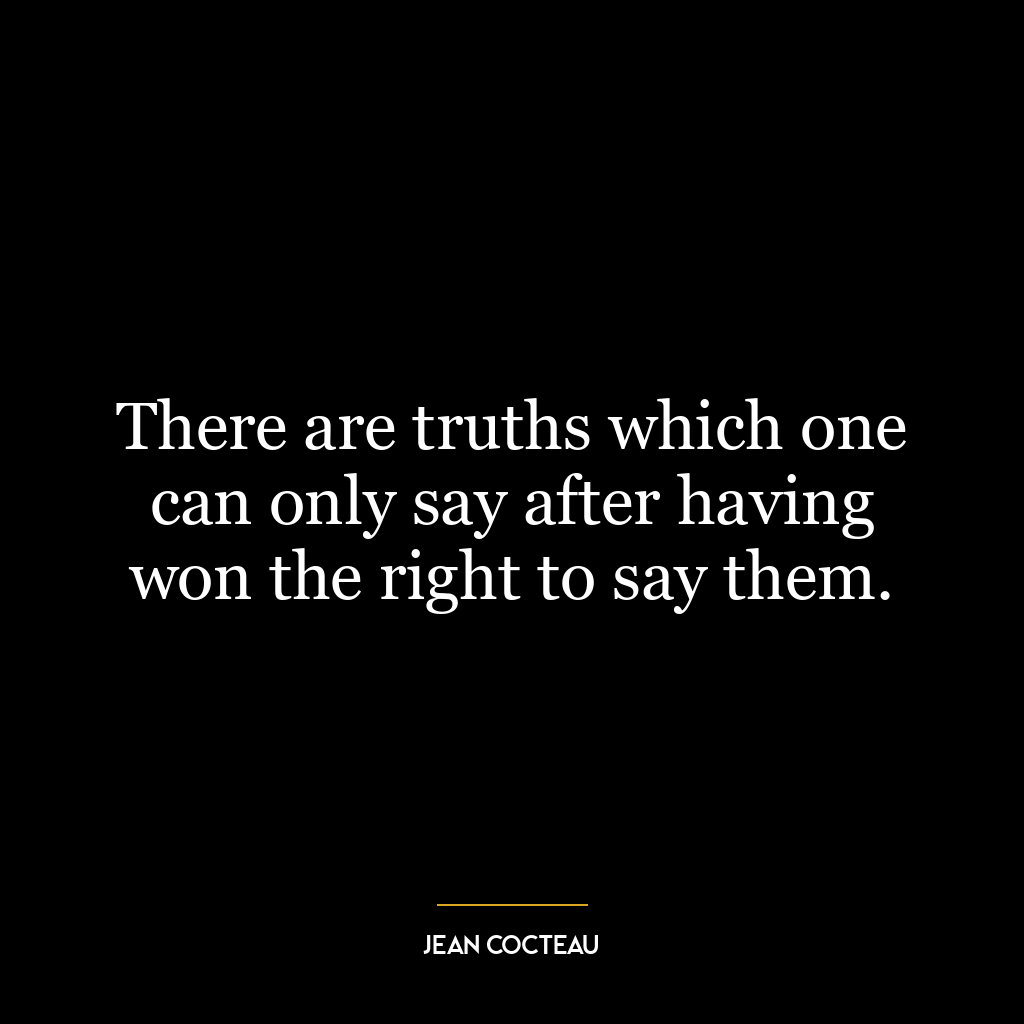Nowadays you envy a manic-depressive. Half the time he’s happy, the other half he’s right.
This quote is a poignant commentary on the human condition, specifically regarding our perception of happiness adn truth. it uses the metaphor of manic-depression, a mental illness characterized by extreme mood swings between mania (high energy and elation) and depression (sadness and despair), to illustrate a broader point about life’s dualities.
The first half of the quote suggests that we might envy manic-depressives because thay experience periods of intense happiness. This could be interpreted as a critique of our society’s obsession with constant joy, positivity, and achievement. We often view thes states as ideal without acknowledging that they can also lead to burnout or an unrealistic expectation for perpetual bliss.
The second half implies that when manic-depressives are not in their happy phase, they are “right,” which can be understood as them being in touch with reality or truth. This part suggests that sadness or depression frequently enough brings clarity or wisdom as it forces us to confront harsh truths about ourselves and the world around us.
applying this idea today might involve recognizing the value in all emotional states – not just happiness but also sadness, anger, fear etc., which are often stigmatized or seen as negative. In personal development terms, this could mean embracing difficult emotions rather of resisting them as they provide opportunities for growth and self-understanding.
Moreover, it highlights the importance of balance – both mania (constant happiness) and depression (constant sadness) can distort our understanding of reality. So perhaps striving for equanimity should be more valued than chasing unending joy.
Lastly, while this quote does not endorse suffering from bipolar disorder nor romanticize mental illness in any way; it serves to remind us that every human experience has value – even those deemed undesirable by societal standards – because they contribute to our overall understanding and engagement with life itself.

